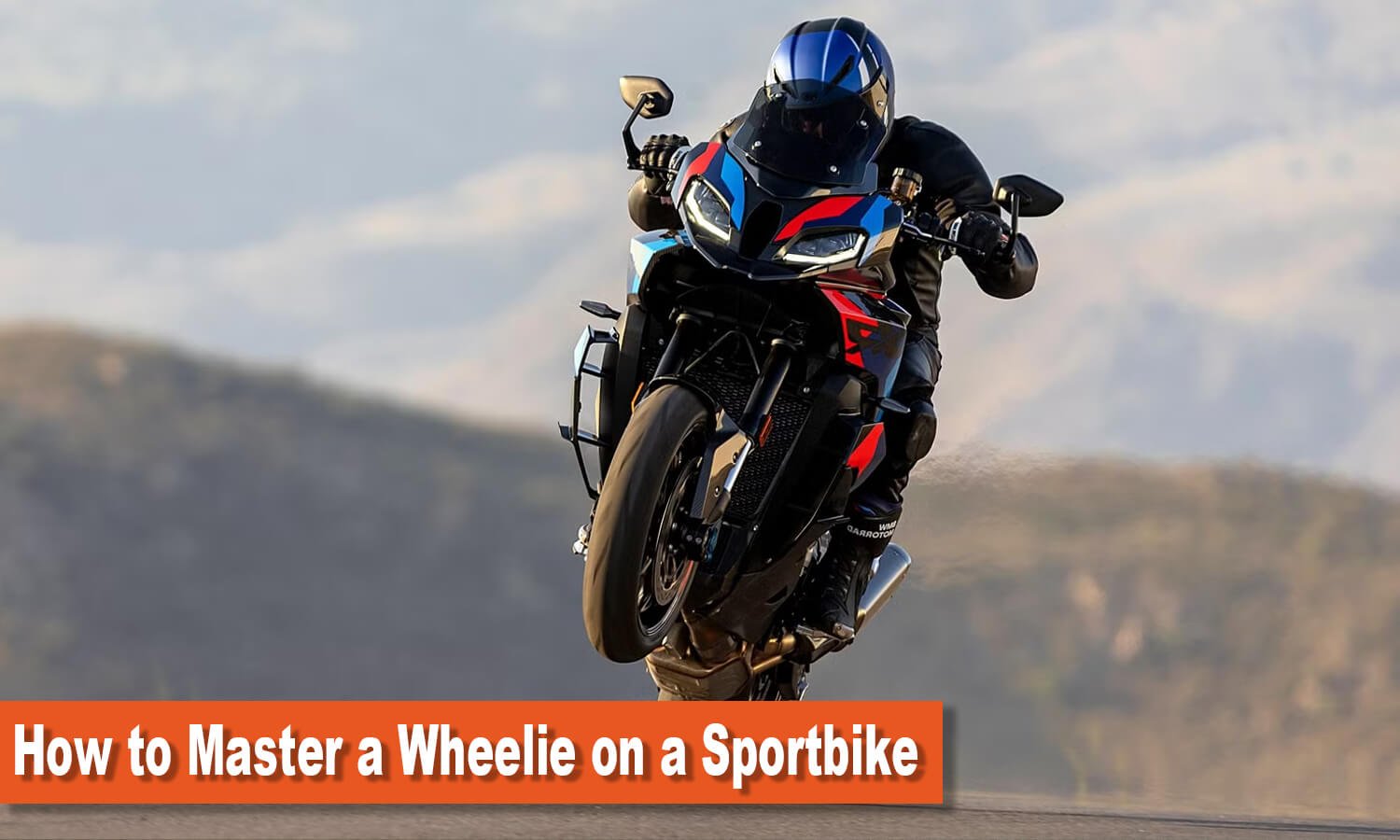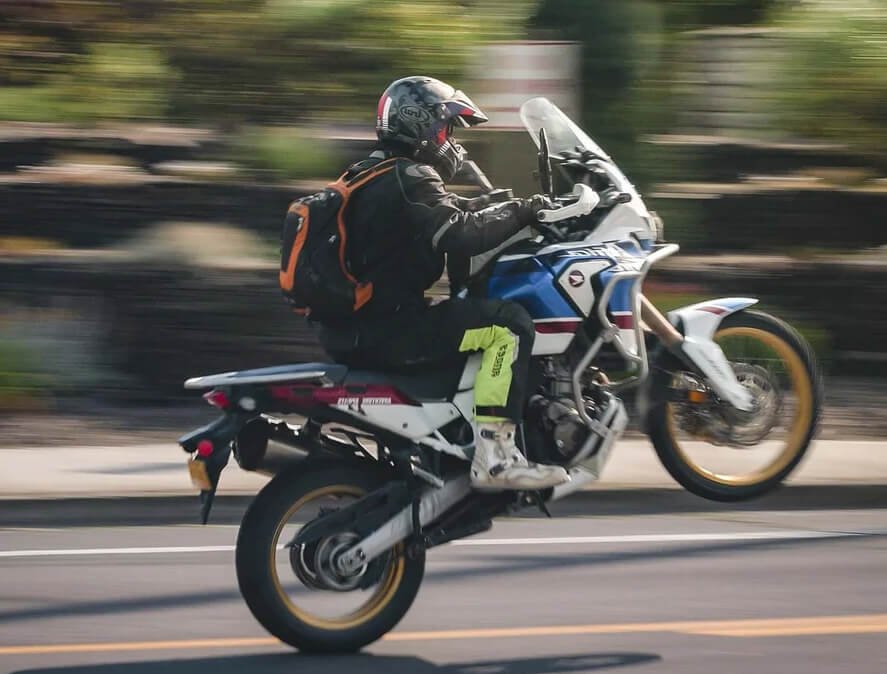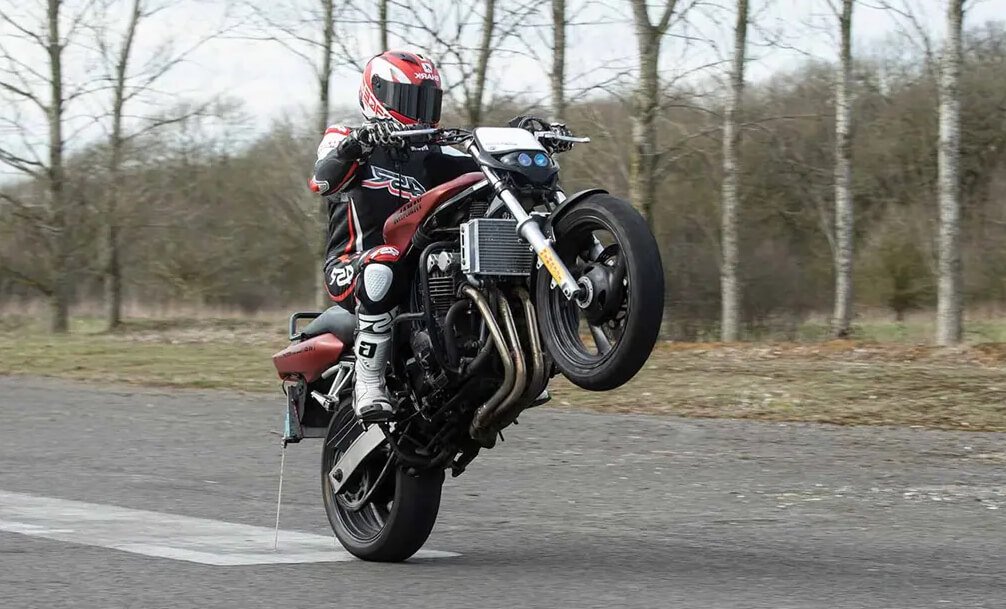Getting your snowmobile’s track adjusted correctly doesn’t have to be complicated. In this guide, we’ll show you the tools, step-by-step instructions, and troubleshooting tips for all major brands — Polaris, Ski‑Doo/Lynx, Arctic Cat, Yamaha, and more. If you do it right, your snowmobile will run great quickly. Why Track Tension Matters Track tension directly affects […]

How to Master a Wheelie on a Sportbike
You know how to ride a motorcycle, but do you know how to lift the front wheel and pull off a smooth wheelie? Motorcycle wheelie is more than just a stunt—it’s a skill that builds confidence, control, and pure adrenaline on your sportbike. Don’t worry—this is a skill that can be learned safely if you follow the right steps and practice patiently. I’m going to walk you through the process, step by step, while sharing tips from my own experience.
Table of Contents
Step-by-Step Guide to Performing a Motorcycle Wheelie

Perform a wheelie on a sportbike
Before You Start a Wheelie on a Sportbike
Wheelies are thrilling, but they can be risky if attempted carelessly.
Before you try your first wheelie, here’s what I recommend: always start in a safe, controlled environment. Find a large, empty parking lot or a closed course with smooth asphalt and no traffic.
From my experience, empty lots or sanctioned stunt days at racetracks work best—they give you plenty of room and no roadside hazards.
Always check the surface carefully, because even a tiny patch of gravel or a small bump can ruin your balance. And yes, always wear full protective gear—helmet, gloves, jacket, and anything else you can safely add. Trust me, a little extra precaution goes a long way.
Step 1: Choose the Right Gear and Speed
I recommend starting in first gear—it gives the most torque to lift the front wheel. Roll forward at a slow, steady pace (around 10–15 mph).
Too slow, and your bike won’t pop up; too fast, and you risk losing control.
Finding the right speed is key to hitting the balance point later on.
Gear choice matters
Staying in first gear avoids having to shift mid-wheelie, which keeps things simpler and safer for beginners. Only after mastering basic wheelies should you experiment with higher gears.
Second gear can work for rolling throttle lifts at very low speed, but holding a wheelie in second requires more speed.
Advanced riders even perform wheelies in second or higher for rolling starts, but as a beginner, sticking to first gear is the best way to stay consistent.
Step 2: Get into Position
Slide back on your seat and grip the fuel tank with your knees. Keep your back straight, head up, and arms relaxed with elbows slightly bent. Lean back just enough to shift weight onto the rear wheel, helping the front lift, but avoid over-leaning.
Your body position is crucial for balance: stay centered on the seat, use your legs and core to stabilize, and keep your arms loose—stiff arms will upset balance.
Look straight ahead toward where you’re going, not down at the wheel; your bike will naturally follow your gaze.
Small adjustments in posture can make a big difference in sensing the bike’s balance point.
Step 3: Lift the Front Wheel
There are two ways I usually recommend:
Power Wheelie: You rely purely on acceleration: come off the line in first gear and roll on the throttle quickly. The bike’s torque and inertia will pop the front up. On powerful bikes (600cc+), I’ve found this to be the easiest way once I have some speed. Sitting back on the bike and opening the throttle just right makes all the difference.
Clutch-Up Wheelie: Sometimes, especially on smaller bikes, I prefer using the clutch to build revs. I pull in the clutch lever, rev the engine to around 4–6k RPM, and then release the clutch while giving it gas. This gives a sharp burst of power that lifts the wheel at lower speeds. I usually perform the same initial steps as a power wheelie, then let the clutch slip just enough to loft the front wheel. I’ve found clutch-ups great for precise launches and on sport bikes with smaller displacements (300–500cc), where throttle alone doesn’t easily pop the wheel.
Pro Tip: If you feel yourself tipping backward, gently tap the rear brake. It’s your safety net and will help bring the front wheel down without panicking.
Step 4: Find the Balance Point
Once the front wheel lifts, the next challenge is finding the balance point and keeping the wheel in the air smoothly.
The key here is delicate throttle control. Too little gas and the wheel drops; too much and it jumps up too high. Small, precise throttle adjustments are essential—you can think of it like gently nudging the bike rather than forcing it.
Practice feathering the throttle: short twists or gentle rolls help you find the zone where the bike floats steadily on one wheel.
Once you reach the balance point, keep your weight steady, knees gripping the tank, and back slightly leaned. Maintain a constant, smooth throttle to hold the wheel up.
Pro Tip: Always cover the rear brake with your foot. Even a light tap can instantly lower the wheel if you overcorrect, acting as a safety net. Look straight ahead rather than down at the wheel—your bike naturally follows your gaze, helping you keep a straight line while balancing.
Step 5: Control and Lower the Wheel
Throughout the wheelie, keep at least one finger on the rear brake. A gentle tap will lower the wheel if you over-rotate. When you’re ready to end the wheelie, slowly close the throttle and let the wheel descend smoothly.
Landing smoothly is just as important as lifting the wheel. Aim to touch down squarely—landing crooked can make the bike wobble or even cause a crash. If needed, slightly modulate the throttle as the front wheel comes down to help keep the bike balanced.
Pro Tip: Start with small, low wheelies and gradually increase height as you build confidence. Every short hop teaches you throttle control, weight distribution, and balance. Patience is your best friend here.
Common Mistakes to Avoid
Learning to wheelie takes practice. Watch out for these common errors:
- Too Much Throttle, Too Fast: Jerking the throttle open suddenly at high revs can loop out (flip the bike). If you feel yourself tipping backward, tap the rear brake immediately. Even skilled riders use a light rear-brake drag to prevent over-rotation.
- Not Using the Rear Brake: Some new riders panic and let the rear brake off. The rear brake is your safety net for dialling in wheelie height. Always keep your right foot near the brake to gently stabilize or end the wheelie.
- Poor Body Position: Leaning too far back or forward will upset your balance. As noted, keep weight over the seat – leaning past the balance point will cause the bike to flip backwards, and leaning forward will bring the wheel down. Some warnings advise against tipping forward or backward too much when the wheel is up.
- Looking Down: It’s tempting to stare at the front tire, but that ruins your balance and steering. Keep your eyes on a fixed point ahead of you to help the bike track straight.
- Starting Too Big: Beginners often try to launch extremely high wheelies right away. This is dangerous. Instead, start with short, low hops and gradually get higher. Each small success builds throttle feel and confidence.

Practice a motorcycle wheelie
Practice Tips
- Progress Gradually: Begin with tiny wheelies — just a couple of feet of lift — before attempting higher lifts or longer wheelies. Guides suggest moving from short hops to full-fledged wheelies with patience.
- Smooth Inputs: Roll on the throttle gently. Jerky or overly aggressive inputs can throw you off balance. Aim for smooth, consistent movements on the bars and throttle.
- Use a Buddy or Coach: If possible, practice with a more experienced rider or instructor. They can watch for hazards and give real-time feedback. Some riders even use training wheels or a helper dragging the rear brake for safety until they feel comfortable.
- Safe Environment: As emphasized, always practice in a wide-open space. Many sources recommend empty parking lots or tracks where you won’t risk hitting obstacles or encountering traffic. Never attempt wheelies on public roads or near pedestrians.
- Stay Relaxed: Tension can work against you. Keep your grip firm but not stiff, and breathe normally. A relaxed posture helps absorb motions and maintain the balance point.
Conclusion
Pulling a wheelie isn’t just a stunt—it’s a skill that boosts your confidence and control on the bike. Take it step by step: start in first gear, find the right speed, adjust your body, lift the wheel with throttle or clutch techniques, and always practice in a safe, open space.
Remember: gear up, stay alert, and respect your limits. Wheelies are fun, but safety always comes first. With practice, patience, and attention to technique, you’ll be able to pull smooth wheelies and enjoy every bit of the ride.

Motorcycle mechanic, writer. Interested in motorcycle gear for years. Like to stay up to date with the newest products and techniques of the motorcycle.
Motorcycle riding is all about the sense of freedom, adventure, and thrill of the open road. But come on—being connected when you ride isn't always an easy thing. Whether you're riding with a buddy, navigating traffic in the city, or long-distance riding, effective communication is crucial. That's where the Fodsports T5 and T6 come in, […]
If you're looking for a new motorcycle intercom system this year, Fodsports has something exciting in store. The company has launched two new Bluetooth helmet intercoms: T1 and T1 Pro. Both models bring upgraded features, sleek design, and high-definition audio quality for riders who want to stay connected, entertained, and safe on the road. But […]
Fodsports T1 and T1 Pro: The Newest Bluetooth Intercoms for Riders. Whether you’re cruising on highways, exploring rugged trails, or commuting daily, clear communication is key. Fodsports is thrilled to launch its latest Bluetooth intercoms: the T1 and T1 Pro. Built for riders who demand reliability, versatility, and crystal-clear sound, these devices redefine how you […]
Many riders who aren't so tall or ladies just starting to ride bikes need to pick out the best Motorcycles for Short Riders and Women. They gotta look for three key things: a seat that's not too high up, a bike that's not too heavy, and something that looks good enough to give them confidence. […]
Fodsports FX 60C vs FX30C Pro: What's new techs are the FX 60C bringing to us? Fodsports is a brand worth-mention for helmet communication and video recording. This brand has established itself as a key player with its innovative Bluetooth camera intercom systems. Recently, Fodsports has released a new camera intercom, the FX 60C. How […]
